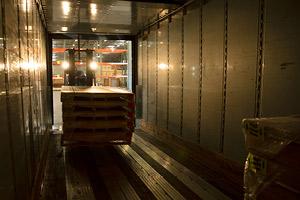Effective Ways to Find LTL Capacity

3 tips for securing reliable LTL capacity in 2022
The supply chain challenges that have impacted everything from import volumes to warehousing space have also affected the amount of capacity LTL providers have had to offer this year. Despite recent indicators that capacity will begin to loosen, the market remains competitive, especially as we enter peak produce season. As shippers look to secure space in any mode possible, the demand for LTL capacity remains high. Because of this imbalance in supply and demand, it’s more important than ever for less-than-truckload shippers to work with carriers they can rely on to move freight on schedule. Finding those carriers means taking steps to ensure you’re evaluating them correctly and partnering with them effectively.
1. Evaluate current processes
If you’re having trouble finding coverage for your LTL shipments, it can be helpful to look into your operations to identify areas of improvement. This is particularly critical in times of tight capacity since changing certain processes could make your freight more desirable to providers.
Start by evaluating:
- The amount of lead time you provide
- How often drivers get detained at your facilities
- How freight is packaged
If you find you’re frequently requesting last-minute shipments, causing significant delays for carriers, or not following proper LTL packaging guidelines, that could be making it more difficult to get the capacity you need. However, you also may find that you’ve been working with carriers that simply aren’t suited for your industry or location. In this case, it may be time to look for a new provider that can better fit your requirements.
2. Look at more than price
Choosing an LTL carrier based solely on their rates could mean limiting the level of service you receive for your shipments. While it’s always important to balance service with cost, focusing on quality service is critical for meeting deadlines in today’s market. Utilizing carriers that prioritize customer support and actively work to optimize their networks can help mitigate risks like missed appointments and extended transit times. The more service-oriented the carrier is, the more you can trust them to deliver on their promises and get your freight moving on schedule.
3. Consider using multiple LTL carriers
Depending on the region they operate in and the amount of space available in their network, LTL carriers can have varying rates, transit times and service options. Broadening the number of carriers you work with can greatly improve the chances of finding capacity when and where you need it. This is especially true considering the ongoing capacity constraints across nearly every mode of transportation. As more shippers diversify their freight options to get shipments moving, your regular carriers may not be able to accept everything you have. The ability to access additional carriers makes it easier to book shipments as space becomes available.
Move your LTL freight with ArcBest
As a leading logistics company with nearly 100 years of LTL experience, ArcBest® is uniquely positioned to offer supply chain solutions even when LTL capacity tightens. Whether you’re looking for capacity for certain in lanes or shipments or preparing for peak season demand, we can help you move your shipments through our LTL carrier ABF Freight®, our network of LTL providers, or through another transportation mode. Learn more about ArcBest LTL solutions.

